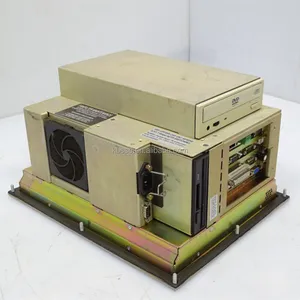
In Stock Touch Screen Logic Module With 256 MB Flash - 256 MB RAM PanelView Plus CE 700-1500 2711P-RP7

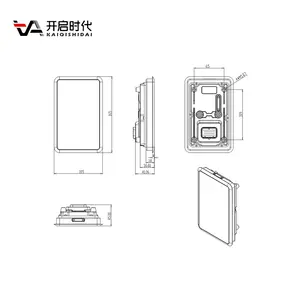
Programmable Logic Display Screen Terminal Industrial Display Capacitive Touch Monitor 5 Inch Plc Pac And Dedicated Controllers





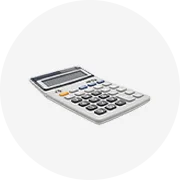




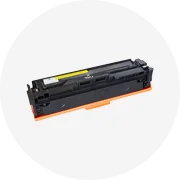




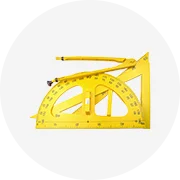

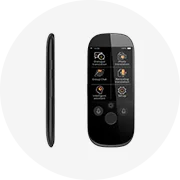



In an era where digital technology is the cornerstone of innovation, understanding the intricacies of digital circuits is more crucial than ever. Digital logic trainers stand at the forefront of this educational revolution, offering students and professionals alike the tools to not only comprehend but also to innovate within the realm of digital electronics. These trainers bridge the gap between theoretical knowledge and practical application, serving as the essential guide for future innovators to navigate the complexities of digital circuits. From combinational to sequential logic, these devices illuminate the path for creating, analyzing, and predicting electronic behaviors that are vital in our increasingly digital world.

Digital logic trainers are essential tools for understanding the core principles of digital circuits, which are foundational to modern computing systems. These trainers help illustrate the difference between combinational and sequential logic, with combinational logic providing immediate results based on current inputs, and sequential logic incorporating timing and memory elements to process inputs in stages. The behavior of these circuits can be predicted and analyzed using truth tables, which map out all possible input combinations to their corresponding outputs.
In the realm of digital logic, various elements such as logic gates and flip-flops form the basic building blocks. For instance, D-type flip-flops are used to latch input data at a clock edge, while T-type flip-flops toggle their output with each clock pulse if their input is high, serving as a frequency divider. Moreover, JK-type flip-flops offer a more complex functionality where the output can be set, cleared, or toggled based on the inputs.
Understanding the timing characteristics like setup, hold, and propagation times is crucial in designing reliable sequential circuits. These parameters ensure that the data is correctly latched by the flip-flops, maintaining the integrity of the circuit operation at high speeds. Ignoring these timing requirements can lead to metastability, where the output becomes unpredictable, potentially leading to system errors or hardware damage.

Digital logic trainers are educational devices designed to assist in learning and experimenting with digital circuits. Alibaba.com hosts a variety of these trainers, catering to different educational and professional needs. The range includes starter kits compatible with our platform's development environment, featuring components like LCD screens and ultrasonic sensors, ideal for beginners and hobbyists. For more advanced users, there are kits that offer a comprehensive experience with a broader array of sensors and modules.
Vocational training kits are tailored for educational institutions, providing didactic equipment to facilitate learning in a classroom setting. These kits often include modules designed to simulate industrial electronics labs. Automotive training kits, focusing on systems and electronic controls, prepare students for the specific needs of the automotive industry.
For those interested in computer architecture, options like the educational digital electronic trainer boards offer insights into microcontroller programming and interfacing. Additionally, the Digital Bread Board Circuits and other similar kits serve as practical tools for vocational science and industrial electronics laboratories, enabling hands-on experience with digital logic design.
Educational institutions may also find comprehensive solutions with kits that include a variety of experiments, supporting a wide range of applications, from basic digital logic to complex microcontroller programming, providing valuable hands-on learning experiences.
The Digital Logic Trainer Board is equipped with a range of features designed for comprehensive electrical lab training. It includes TTL ICs for studying logic gates, flip-flops, and other digital components like Schmitt Triggers, Expanders, Binary Address, Counters, and Shift Registers. Additionally, it incorporates Multiplexers, Demultiplexers, an 8-Bit D/A Converter, and an 8-Bit A/D Converter. The board provides a large Bread Board area for circuit assembly, complemented by other accessible accessories.
Key specifications include a fixed DC output voltage of 5V and an adjustable 0-±18V, with an output current capacity of 1Amp. It maintains load regulation within ±1% across the full load spectrum and ensures minimal ripple and noise under 2mV. The trainer offers a variable clock frequency ranging from 1Hz to 1MHz, adjustable through frequency range selectors and multipliers. For inputs and outputs, it features 16 switches for logic inputs and 16 bright red LEDs for output indicators.
The trainer is also furnished with a 4-digit seven-segment display with a decoder driver and a digital DC voltmeter with a 0-20V range. The operating conditions are optimal between 0 to 40°C and a relative humidity of 95% at 40°C. The breadboard section includes 2 terminal strips and 4 distribution strips, totaling 1680 tie points for versatile circuit configurations. The unit requires an input voltage of 230V ±10% at 50 Hz AC mains and comes with a variety of ICs to facilitate a variety of experiments and educational applications.
The Digital Trainer is a robust educational tool designed for hands-on learning in digital electronics. It incorporates a general-purpose digital experiment board, which includes a variety of built-in circuits and a standard breadboard. This design allows for a wide range of digital applications, facilitating the interlinking of electronic circuits by students using short colored cables with insulated alligator clips. The construction of the Digital Trainer ensures that component parts remain secure, preventing loss or damage in a classroom setting.
Materials used in the construction of the Digital Trainer are chosen for their durability and functionality. The trainer features data switches and LED indicators, which are fundamental for providing digital logic inputs and outputs, essential for prototyping digital electronic circuits. The switches allow for the adjustment of DATA OUTPUT pins, which is critical for creating various digital states required for learning and experimentation.
The design of the Digital Trainer is intentionally simple, making it accessible for students to construct, if necessary, and affordable enough to be retained for continued practice outside of laboratory settings. This simplicity does not compromise its capability to demonstrate complex logic, counting, and mathematical operations through the use of basic gates like AND, OR, NAND, NOR, and NOT, which are explained within the trainer's instructional framework.
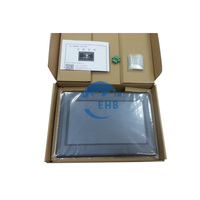
Digital trainer kits, particularly IC Trainer Kits, are indispensable in educational and industrial settings for hands-on learning and practical application of theoretical concepts. These kits facilitate the construction of electronic circuits, allowing for experimentation and understanding of circuit operations without the need for permanent alterations. The binary processing capability of these kits, which operate in 'On' and 'Off' states, is crucial for demonstrating the fundamentals of digital logic. In educational environments, they serve as essential tools for students to grasp the intricacies of digital electronics, providing a tangible way to learn about gates and circuit design. In the industry, these trainers are used for prototyping and testing new designs, ensuring that professionals can validate circuit functionality before moving to production stages. The inclusion of components like short colored cables with insulated clips enhances the ease of use, making these kits user-friendly for both students and professionals alike.
Digital logic trainers are instrumental in the educational and industrial landscapes, providing a hands-on approach to understanding the complexities of digital circuits. These trainers serve as a bridge between theoretical concepts and real-world applications, allowing users to experiment with and grasp the principles of digital logic design. By simulating electronic circuits and logic gates, they offer a practical way to comprehend AND, OR, and NOT functions, which are crucial for computing and robotics. The use of digital logic trainers in developing hardware like circuit boards and microchip processors is invaluable, as they process various inputs and system protocols essential in high-tech systems. Moreover, the knowledge gained from using these trainers is applicable in designing infrastructures for information storage, signal transmission, and processing components, enhancing device performance while reducing energy consumption.
When selecting the right Digital Logic Trainer, it's essential to consider the variety of circuit blocks included. A comprehensive module should enable students to explore and understand the fundamentals of digital logic circuits through hands-on exercises. Look for a trainer that includes a diverse range of circuit types, such as Clock, Input Signals, Open Collector, Tri-State Output, AND/NAND, Set/Reset Flip-Flop, TTL/CMOS Comparison OR/NOR, D-type Flip-Flop, Data Bus Control, and JK Flip-Flop and XOR/XNOR circuits. These components are crucial for a thorough understanding of digital logic and for troubleshooting skills development.
The design of the circuit board itself is also a key consideration. It should be user-friendly and robust enough for repeated use in an educational or industrial setting. The layout of the circuits should facilitate easy identification and interaction, which is vital for effective learning and experimentation. Additionally, the integration capability of the trainer with other educational tools is an important factor. This ensures that as technology advances, the trainer remains a relevant and valuable resource for students and professionals alike.
The Digital Electronics Lab Trainer is designed to be integrated seamlessly with other educational tools, such as analog trainers. This compatibility allows for a comprehensive learning solution that covers both analog and digital electronics. The ability to function alongside other educational apparatus highlights its versatility in a learning environment, providing students with a hands-on experience that bridges the gap between theory and practical application. The integration of the digital trainer with additional resources enriches the educational process, offering a more in-depth understanding of electronics that is crucial for students preparing for careers in this field.
The landscape of electronics has been transformed by the shift from analog to digital, with Digital Integrated Circuits (ICs) or 'chips' becoming the cornerstone of modern electronic devices. This evolution has not only enhanced signal speed and storage capabilities but also opened up a plethora of opportunities in the realm of digital design. The recent emphasis on developing domestic manufacturing capabilities, particularly in chip production, has further underscored the importance of digital logic training. As a result, there is a growing demand for Digital Design Engineers, fueled by significant investments from both the private sector and governments globally.
Digital logic trainers are integral in preparing students and professionals to meet this demand, equipping them with a practical understanding of combinational logic, sequential logic, state machines, and circuit implementation and testing. These trainers serve as a bridge between theoretical knowledge and real-world application, ensuring that learners are well-versed in the intricacies of digital circuit design. As the industry continues to evolve, the role of digital logic trainers will expand, adapting to new technologies and methodologies to provide comprehensive and future-ready education in digital electronics.
Digital logic trainers are more than just educational devices; they are the catalysts for innovation in a digital age. Throughout this guide, we've explored the diverse range of trainers available on platforms like Alibaba, each tailored to different levels of expertise and industry requirements. From the basic TTL ICs to complex microcontroller programming kits, these trainers are equipped with features and specifications designed to provide a comprehensive understanding of digital electronics. The robust materials and user-friendly designs ensure that learners can experiment with confidence, while the integration with other educational tools offers a holistic approach to electronics education. As we look to the future, the importance of digital logic training cannot be overstated, with the demand for skilled Digital Design Engineers on the rise. These trainers not only prepare individuals for current technological challenges but also equip them with the knowledge to adapt to and shape future trends in digital logic. In conclusion, digital logic trainers are indispensable in empowering the next generation of innovators, providing the practical experience necessary to turn theoretical knowledge into groundbreaking technological advancements.